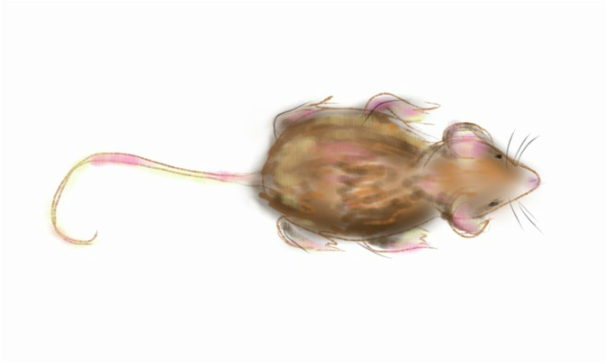|
1/9/2012 0 Comments Mouse DissectionAs a middle schooler, I never got a chance to dissect a frog. As a high schooler, there were no rats, cats, pigs, or other hairy mammals whose innards we could examine. My first dissection was quite recent-- about a month ago. It was a brown-grey mouse with big yellow teeth and I made a bloody mess trying to extract the left quadricep. Since then, I've gotten much better at dissecting and have found it exhilarating, even, to see inside the body of a once-alive mouse. There's that side of working with mice, but there's also a conflicting side of me that appears only after, battering against my scientist gaze. You are a mouse killer now, it says. This side of me arises when I go into the mouse facility in the Biolabs and hear the hundreds of mice rustling in their tiny cages, cramped and growing fat with lack of exercise. It arises when I hear squeaks of pain after cutting the ears of one mouse to distinguish it from the others in its cage. It arises as I (with great pleasure) pet baby mice on the head after weaning them from their parents. I think mice are adorable. I also like dissecting them. Who knew working with mice would be this...divisive? My obsession with mice (living and dead) have resulted in the drawing and poem below. Mouse Dissection To dissect a mouse, you need to pin it down, spread-eagled, like a leopard rug, and stick the needles through the four pink palms into the Styrofoam below. They do not bleed, nor does the mouse move, having been stretched, kite-fashion, and suffocated. To dissect a mouse leg, you need to hook a sharp scissor under its knee joint and make an incision at the grey or white hide above it. Again, there is no blood, and the muscle is pink, like a baby's bottom. To dissect a mouse quadricep, you take the hide with thin tweezers and let the silver guide the fur up and over layers of fat. Your scissor blades must cut through the tendon at the knee cap, but spare the bone, spare yourself the sight of white splintering, the red marrow like the glistening of blood. But there is no blood if you are careful, and the quadricep comes free like a lumpy petal from the body. Do not forget to wear gloves as you pin and cut and tear at sinews. Do not forget to keep alert, but let yourself look away from the slightly open maw of the animal, the yellowed buckteeth and the tender nose. In the end, you unpin the four paws, the body loose and limp, you wrap it in a paper towel runner and bury it inside a plastic bag. The refrigerator provides a cold, makeshift coffin. The way the gloves snap off, the fingertips never bloody, is a ritual, like the clanging of funeral bells, clack, clack. The scissors and tweezers are sprayed clean and wiped to a shine, and what is left of the mouse sits in a test tube that looks like an urn, waiting to be remembered. --Stephanie Wang
0 Comments
Leave a Reply. |
What's HotGet the DigestAbout the Blogger
Stephanie M. Wang is a Chemical and Physical Biology major at Harvard College, Class of 2013. She is a pre-med who just can't get enough of the hard sciences. She loves learning new things, frisbee, poetry, every kind of apple, people. Stephanie blogs regularly for the Scientista Foundation: Find her blog here!
More From Stephanie |
The Scientista Foundation, Inc. All Rights Reserved © 2011-2021 | Based in NY | [email protected]
The Network for Pre-Professional Women in Science and Engineering
The Scientista Foundation is a registered 501(c)(3) -- Donate!
The Network for Pre-Professional Women in Science and Engineering
The Scientista Foundation is a registered 501(c)(3) -- Donate!







 RSS Feed
RSS Feed